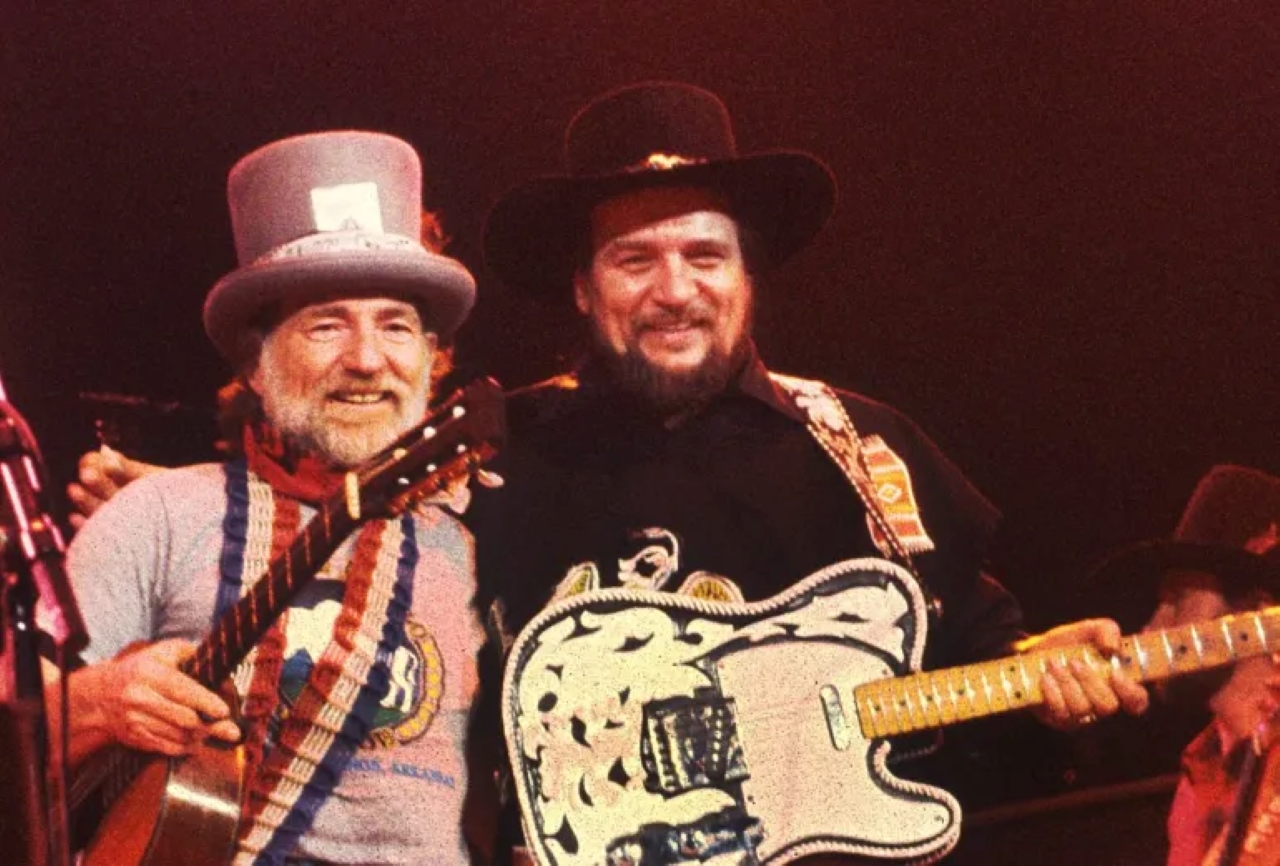🎶 The Cage of Nashville
By the late 1960s, country music had a polished sound dictated by Nashville’s Music Row. Producers controlled arrangements, session musicians replaced artists’ own bands, and lush strings softened the raw edges of honky-tonk storytelling. It sold records, but it left some artists suffocating. Willie Nelson was one of them. Despite being a brilliant songwriter—penning classics like Crazy for Patsy Cline—his own career as a performer stagnated. He grew tired of being told what to sing, how to sing, and how to dress.
Waylon Jennings felt the same. Signed to RCA in the 1960s, he was frustrated that every record sounded like the last. He wanted grit, rhythm, and the freedom to sound like himself. Both men knew they were outsiders in the Nashville system, and both were ready to break free.

🤠 Willie’s Escape to Texas
In the early 1970s, Willie Nelson made a bold decision: he walked away from Nashville and moved back to Texas. There, in Austin, a new scene was brewing. The hippies at venues like Armadillo World Headquarters embraced country music with the same passion they had for rock. For the first time, cowboy hats and tie-dye shirts mixed under the same roof. Willie’s music—earthy, honest, a little rough around the edges—fit perfectly. In Austin, he was no longer a struggling Nashville act. He was a hero.
⚡ Waylon Takes Control
Meanwhile, Waylon Jennings pushed back against RCA. He demanded full creative control, insisting on producing his own albums and using his own band. RCA resisted—until they realized Waylon wasn’t bluffing. With his 1972 album Ladies Love Outlaws, Jennings set the stage for a movement. The title itself coined the phrase “outlaw country.” He ditched the Nashville polish, plugged in electric guitars, and let the music breathe with raw honesty.
🔥 The Birth of Outlaw Country
By the mid-70s, Willie and Waylon had become the faces of a rebellion. They weren’t alone—Kris Kristofferson and Johnny Cash were part of the same circle—but together, Willie and Waylon embodied the outlaw spirit. They wore long hair and beards, played rowdy shows, and lived the hard lives they sang about. Nashville executives didn’t approve, but audiences loved it.
The defining moment came in 1976 with the compilation album Wanted! The Outlaws. Featuring Willie, Waylon, Jessi Colter, and Tompall Glaser, it became the first country album to go platinum. For the first time in history, rough, rebellious country music outsold the polished Nashville product. Outlaw country had arrived—and it wasn’t leaving.
🎤 “Mammas Don’t Let Your Babies Grow Up to Be Cowboys”
In 1978, Willie and Waylon recorded a duet that captured everything the outlaw movement stood for: Mammas Don’t Let Your Babies Grow Up to Be Cowboys. The song was humorous, heartfelt, and defiant. It warned that cowboys were restless souls, unreliable lovers, and dreamers who chose freedom over security. It wasn’t just a hit—it was an anthem. Fans sang it with pride, as if embracing the idea that being an outsider was a badge of honor.
🍻 The Lifestyle and the Myth
Part of what made outlaw country resonate was that it wasn’t an act. Willie and Waylon lived it. They smoked, drank, fought, and laughed their way through the 1970s. They weren’t perfect role models, but they were real. In a world where country stars were groomed to look spotless, the outlaws embraced imperfection. They connected with farmers, truckers, drifters, and hippies alike. Their music said: you don’t have to fit the mold to have a voice.
🌌 Willie’s Stardust Gamble
In 1978, Willie shocked everyone by releasing Stardust, an album of pop standards like “Blue Skies” and “Georgia on My Mind.” Nashville thought it was commercial suicide. Instead, it became one of his greatest successes, staying on the Billboard country chart for over a decade. Willie proved that outlaw didn’t mean limiting yourself—it meant refusing to be boxed in.
🛣️ Waylon and the Road
Waylon, meanwhile, leaned into his outlaw identity with albums like Ol’ Waylon and Are You Ready for the Country. He embodied the restless, rebellious cowboy, constantly on the move, living life with no apologies. His deep, booming voice carried authority, but his lyrics carried vulnerability. Beneath the outlaw image, he was an artist wrestling with his own demons.
🌟 Cultural Impact
Outlaw country didn’t just change music—it changed culture. It blurred the lines between country and rock, paving the way for crossover artists. It gave musicians permission to write about real life: addiction, heartbreak, poverty, rebellion. It created a generation of fans who weren’t loyal to Nashville, but to authenticity. Willie and Waylon showed that country could be bigger, bolder, and more honest than the industry allowed.
🌺 The Legacy
Today, “outlaw” is more than a subgenre—it’s an attitude. Artists from Merle Haggard to Sturgill Simpson have carried the torch. But it was Willie Nelson and Waylon Jennings who lit the fire. Willie, now in his 90s, still tours with the same outlaw spirit, while Waylon’s voice echoes through the generations. They didn’t just sing songs; they gave country music its freedom.
📖 Conclusion
The story of outlaw country is the story of two men who refused to be tamed. Willie Nelson and Waylon Jennings didn’t just break the rules—they rewrote them. In doing so, they created not only a musical revolution, but also a cultural one. Their long hair, their ragged voices, their defiance, and their humor all told the same truth: music belongs to the people, not the industry. And that truth still rides with every note of outlaw country today.